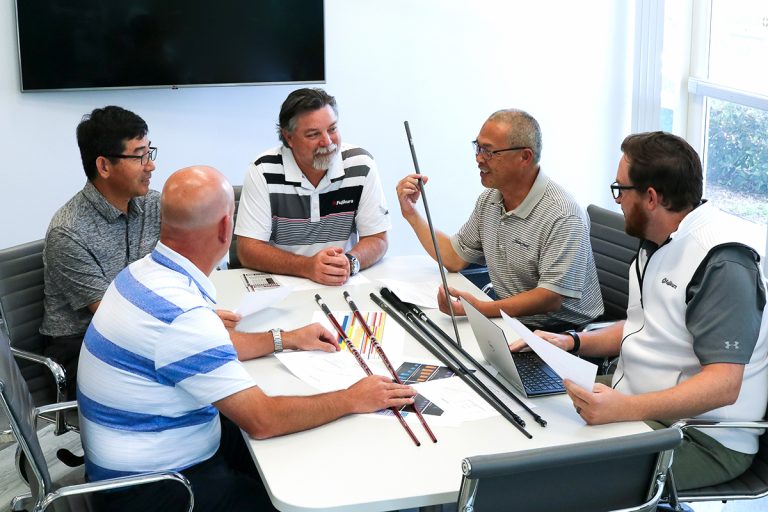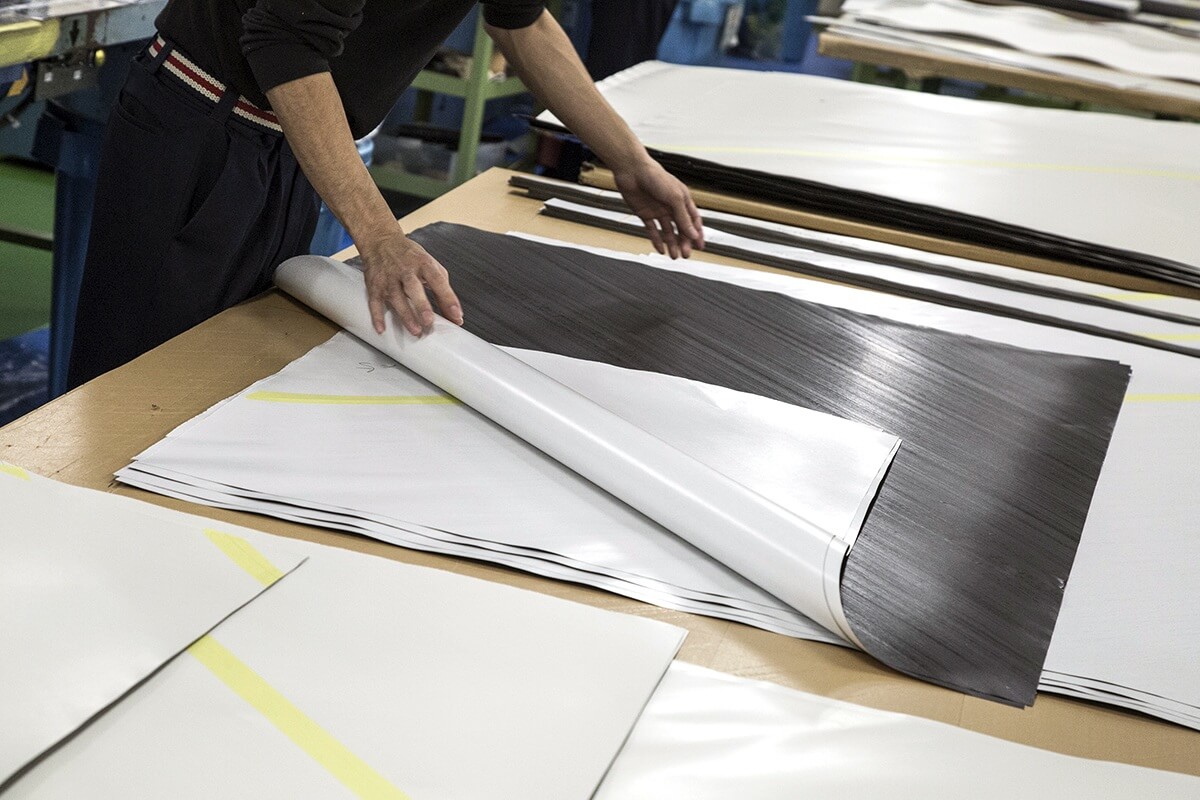Last week we invited our readers to tell us how we can do a better job of helping you with your golf game. While replies varied from basic (course management strategies) to more complex (year over year comparisons of Most Wanted equipment winners), it was clear many of you have a long list of shaft questions you’d like to see answered. Good news – we’re on it.
Class is back in session!
In the first edition of Shaft University, we tackled the material makeup of carbon composite shafts and had you ponder the esoteric question of “What’s a shaft before it becomes a shaft?”
Because this time we’re delving into shaft design, if you’re not immediately pulling terms like CFRP, polymer, and pre-preg from your short-term memory bank, maybe a quick refresher would help. Also as this is a meaty topic, we’re breaking it up into two segments to give your grey matter some time to absorb and reflect so if you feel you’re drinking from a firehose, at least it’s not on full blast.
OBJECTIVE: I can list and define the major developments in shaft design
HISTORY and EVOLUTION
Cue the filmstrip. It’s 1974, and Fujikura just entered the world of graphite shafts. At the time, the technology was rudimentary, but in point of fact, represented cutting-edge thinking and engineering. Consider your family grocery-getter or the Dodge Monaco of Blue’s Brother fame as a point of reference.
Technology is a matter of context. Most adults don’t consider a light-switch a major technological achievement, and many under 30 have only known a world of smart-phones. All of that is to say, graphite shafts today are as far from their predecessors as a 2019 Dodge Charger SRT Hellcat is from a 2nd generation Chevy Camaro.
The earliest graphite shafts served the industry with a single benefit. Whereas steel shafts got stiffer as they got heavier, graphite shafts could change weight and flex independently. Basically, graphite shafts gave players performance and feel similar to steel, but in a lighter package.
Though materials were wrapped with intended precision, the final product lacked the concentricity and balance which is understandable given that early shaft designs were built using a small number of large size plies (pieces of material) from only a couple of material types.
To make a section of the shaft stiffer, additional layers of material were added, similar to wearing several pairs of socks to keep your feet warm. It’s effective, but not necessarily efficient, and moreover, it gave the shaft an isometric quality (changing one part of the design invariably changes other pieces of the design).
Today, the industry has an exponentially higher level of understanding of the geometry required to create shafts with different performance profiles. It used to be chocolate vs. vanilla, and now it’s 31-favors. Simply, shaft companies have a better understanding of to apply materials to create a desired performance or benefit. They also have a much larger arsenal of material types, sizes, and software design capabilities from which to pull.
Shaft performance is affected by the clubhead to which the shaft is attached. So, picking on specifically on drivers, as equipment OEMs have worked to increase head size (460cc is the USGA legal max), and tweak mass properties (weight, CG location, and MOI), shaft technology has had to adapt. Once upon a time (rest in peace 983K) bore-through hosels were a thing (mainly for Titleist and Callaway), and now with adjustable tips and 45.5” stock driver lengths, the balance point of a shaft has shifted, so golfers don’t feel as though we’re swinging telephone poles.
Another evolution is how shaft companies have been able to achieve lower torque profiles, particularly in lighter weight shafts. Previously, lower torque designs required large amounts of material in the tip and mid-sections, increasing the total weight of the shaft. If you wanted shaft with low torque properties, it was likely going to be quite heavy. Now with higher tensile modulus and tensile strength composites (remember those two dandy bits of vernacular?) shaft OEMs can create low-torque designs in nearly any weight class.
Composite shafts aren’t just for metalwoods, and one has to think we’re only a major-winning graphite iron shaft or two away from a tipping point. Remember, for a lot of us, 43” playing drivers with steel shafts doesn’t seem that long ago. In the old days, if a golfer wanted irons with graphite shafts, they would have to be built .5” long to achieve reasonable swing weights. One-half of one inch might not sound like much, but unnecessarily playing over-length irons is buying a pair of shoes in size 10, when you actually wear an 8.
Another way to think about this – pick out your favorite pair of running shoes and run a half-marathon in a pair two sizes bigger. The problem was to get the benefits of graphite in a set of irons, golfers had to make some serious compromises, none of which seem all that reasonable today. Through the advent of technologies like Fujikura’s HDCC (High Density Composite Core) and MCT (Metal Composite Technology), proper swing weights can be achieved through shaft designs which use heavier materials to add weight towards the tip section.
SHAFT DESIGN
This is at least a four-course meal, so let’s continue the food analogy and use this little appetizer as a good place to take a break.
Shaft design isn’t unlike choosing a restaurant for dinner. It’s outcome-based thinking which starts with a basic question, “What sounds tasty?” or in the case of shaft design, “What do we want this shaft to be able to do?”
Needs range from simple to complex, and therefore, the destination can be McDonald’s or Peter Luger. As specific and unique as the requirements are of a particular player (or group of players) shaft companies are more capable than ever of designing products to address those specific performance characteristics. The more accurately a player can express what he or she wants a shaft to do, the easier it is for engineers to determine a priority list of performance attributes. Every shaft does something, but no shaft can do everything. There’s always some sort of trade-off, though companies on the very forefront of shaft R&D are working to mitigate that reality.
That said, there’s no reason to eliminate every trade-off when it’s more cost and resource-efficient to offer several shaft lines with unique performance characteristics. When a truck tries to become a mini-van and simultaneously a sportscar, it’s probably none of the three.
Every company has a variety of technologies and tools at its disposal to aid in the design process. For Fujikura, a proprietary motion capture software called ENSO gives it the ability to capture thousands of data points throughout a single golf swing, not just at impact. Think of ENSO as an MRI for golf shafts, and because there are only three ENSO systems in existence (Fujikura has two and PING owns the other) it’s fair to suggest Fujikura has a method of data collection which sets it apart from other shaft manufactures.
That’s the 20,000-foot view. In Shaft Design Part 2, we’ll delve into the finer details and processes involved in moving a shaft from the ideation process to the final product.
So with that, ruminate (and post your thoughts) on this…
Considering the vast amount of data ENSO is capable of gathering, what are the implications for R&D? Consumers? OEMs? Tour Professionals?




















John
4 years ago
Strikingly well written.
I learned a lot.